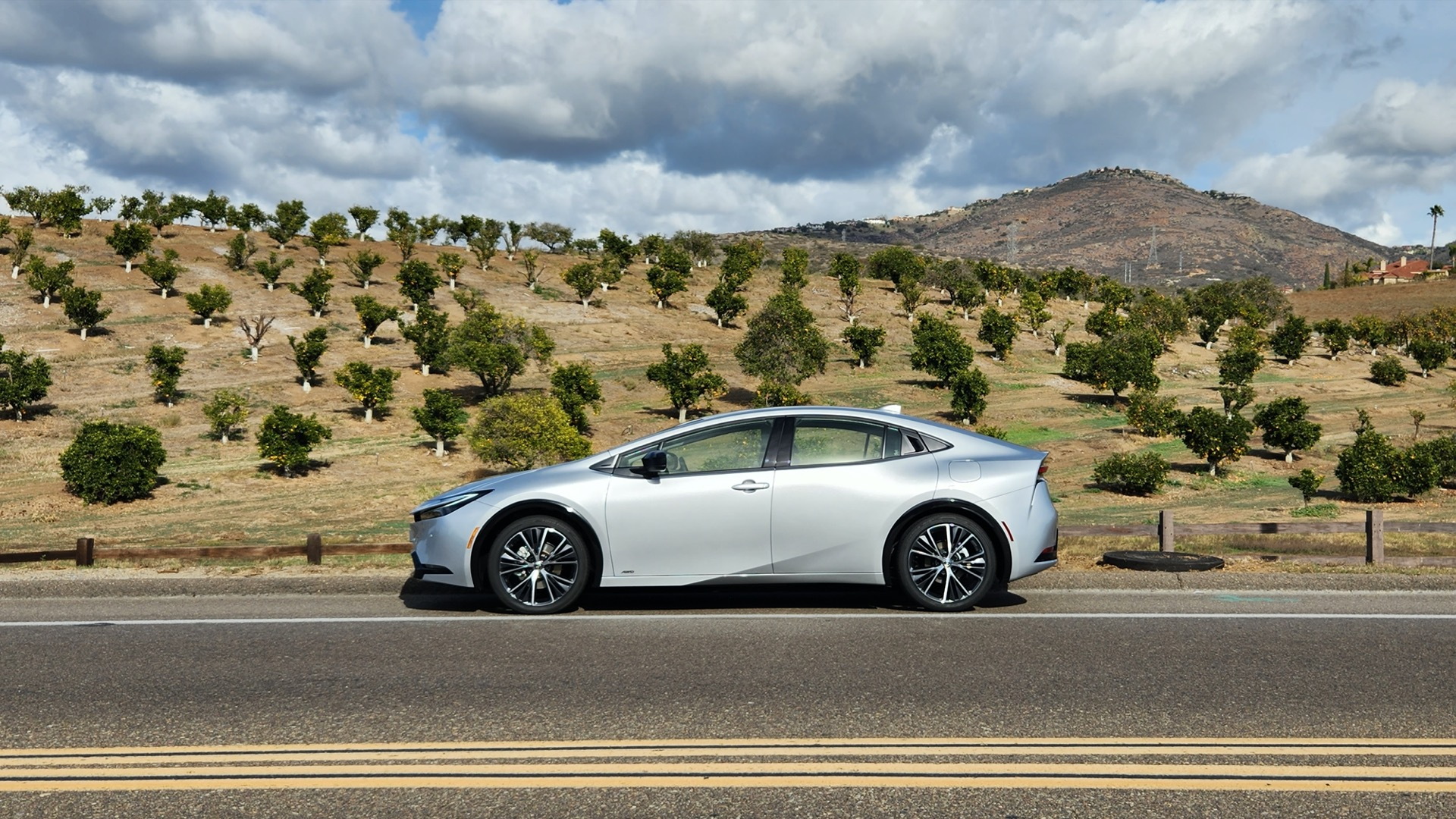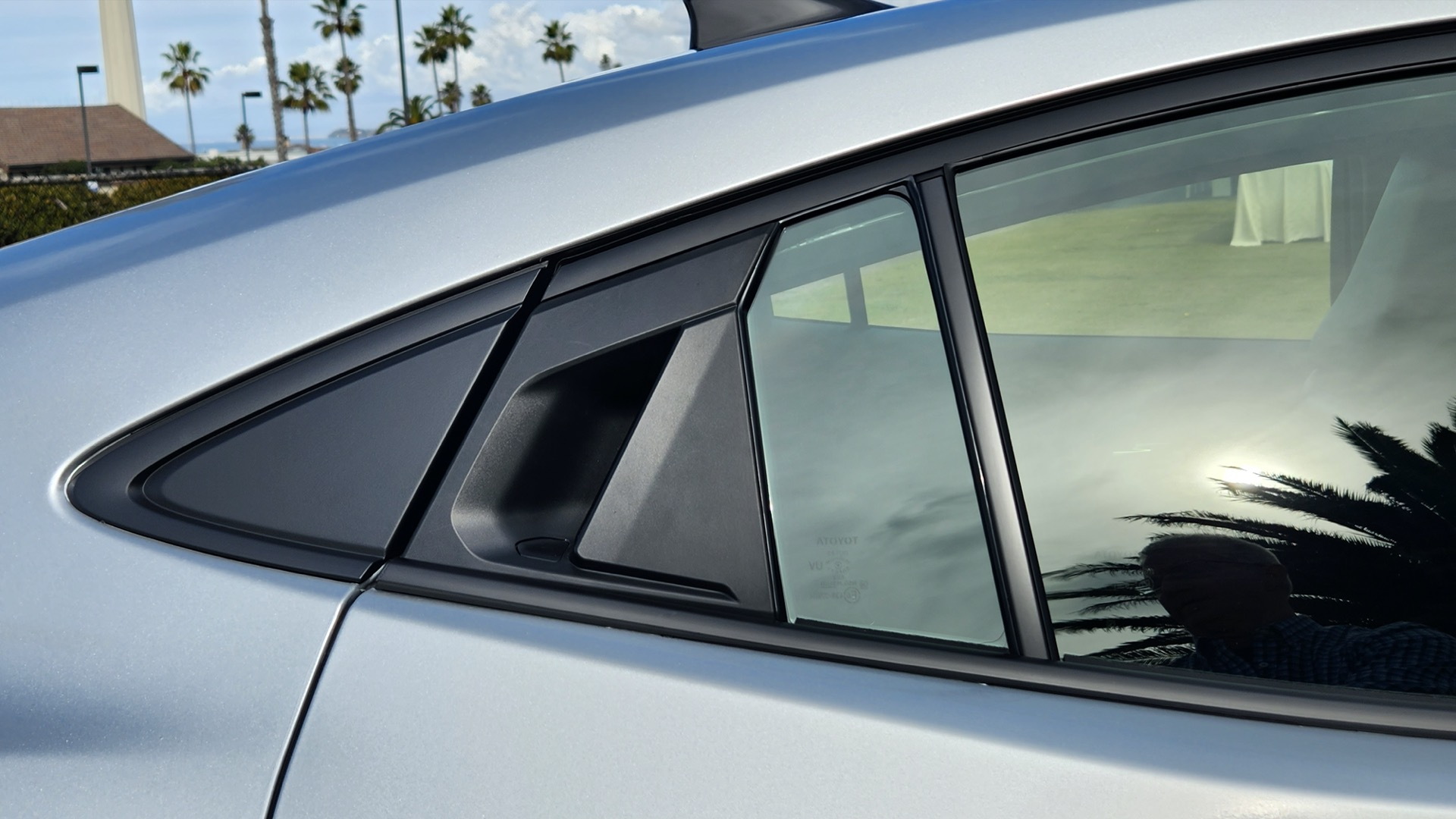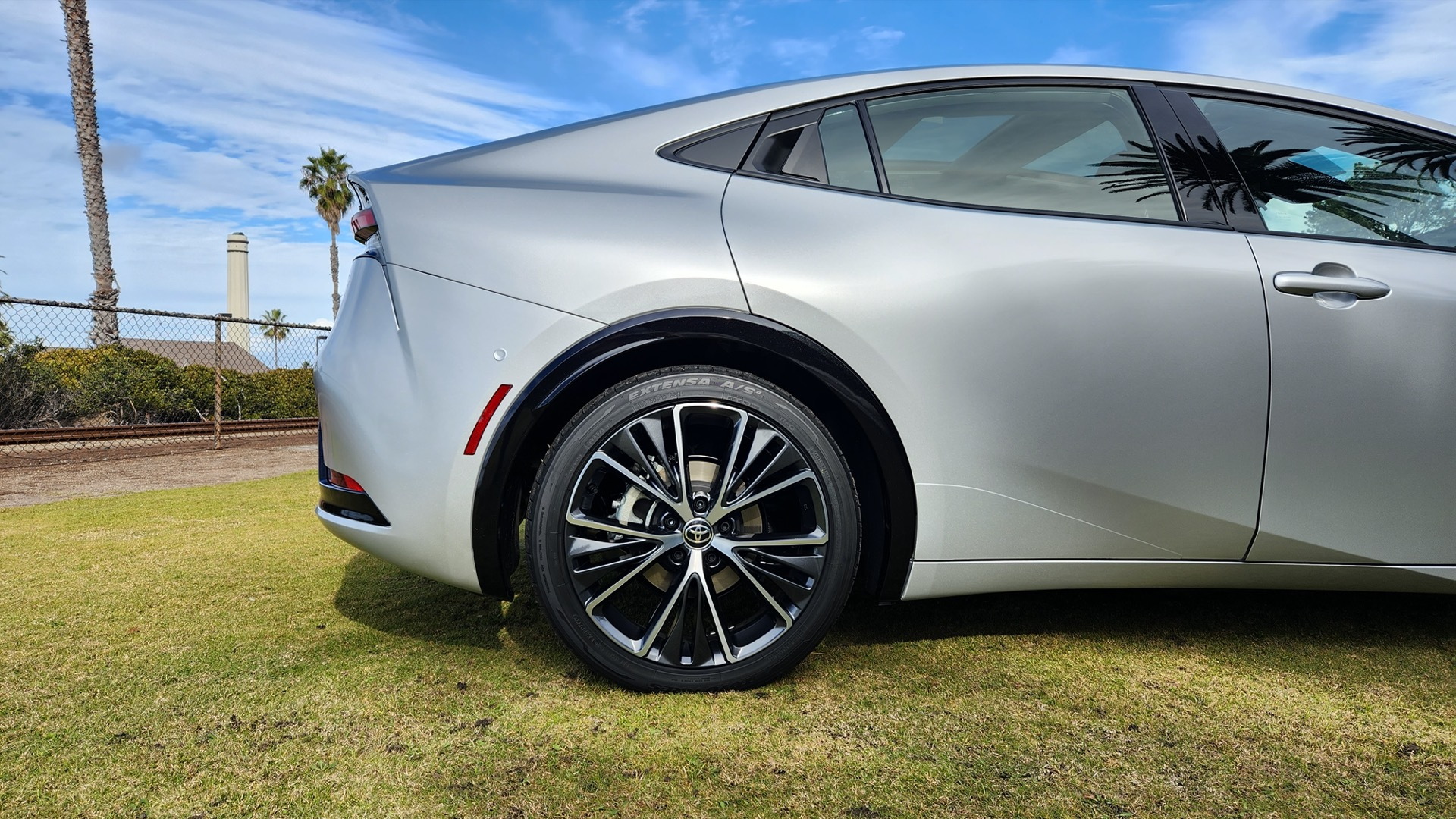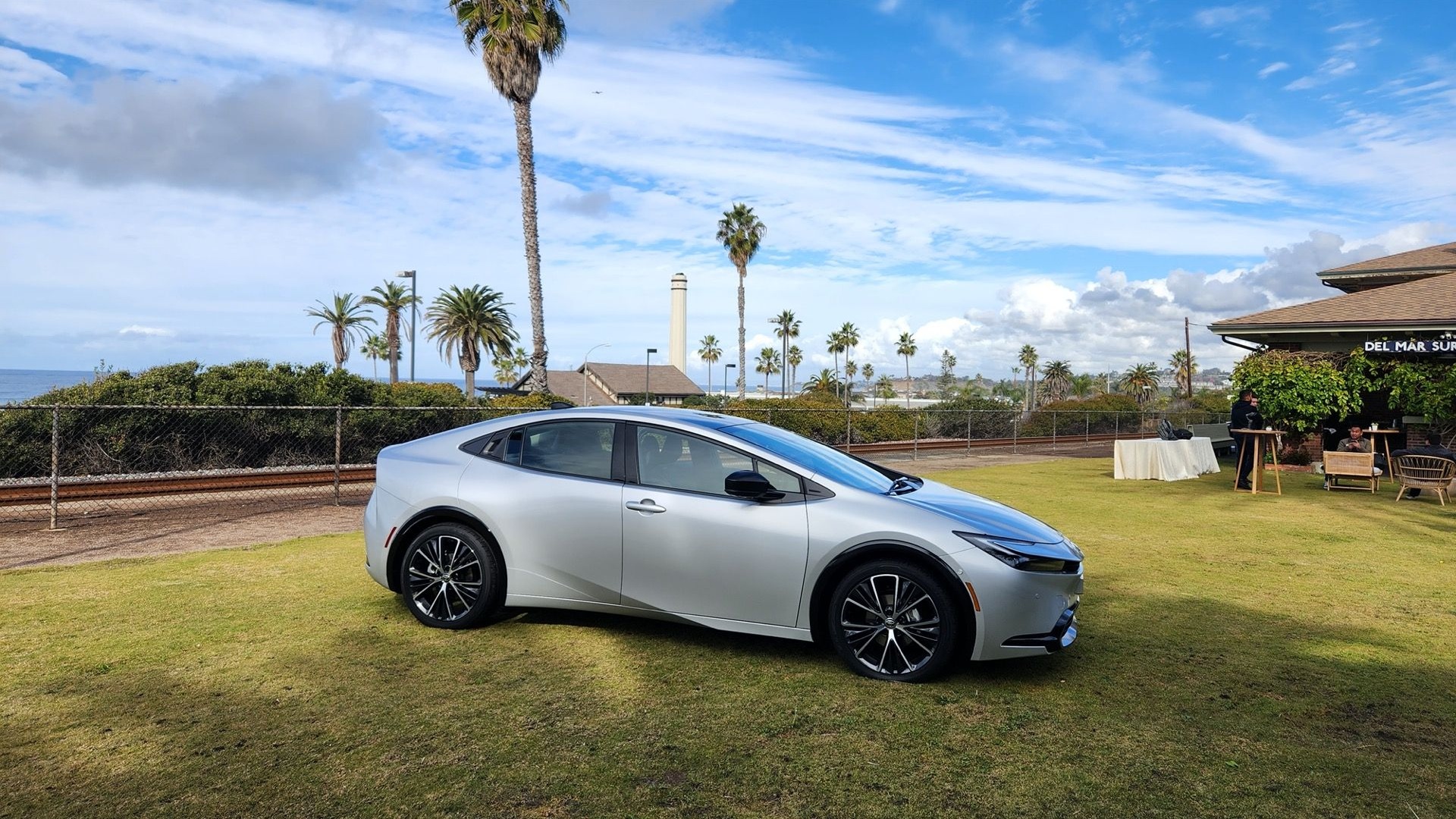Throw away what you think you know about the Toyota Prius, the ur-hybrid that was briefly Silicon Valley’s most tech-forward car before it was supplanted by Tesla and other electric cars.
The 2023 Toyota Prius, which goes on sale early next year, is a stunner. The sleek, wedge-shaped form wasn’t easy to achieve while preserving the Prius' mpg, but the company’s engineers and designers pulled it off. On top of the new shape, it’s considerably faster, has a more conventional interior, and maintains the same striking fuel economy, EPA-rated at up to 57 mpg combined for some versions.
It’s a startling correction for Toyota, whose last generation of Prius, launched in 2016, was—to put it mildly—a controversial design. Reviewers described its collection of lines, accents, question-mark-shaped vertical taillights, and other stylistic flourishes with terms like unfortunate or regrettable or just plain hideous.
In early December, we drove two versions of the new 2023 Prius and rode in a third during a media drive held outside San Diego. We came away impressed; Toyota has kept the traditional Prius fuel efficiency but improved performance, safety features, and most of all, the looks.
Wait, THIS is a Prius?
To our eyes, the shape is stunning. It produced rapturous awe among those who saw the near-simultaneous Prius debuts held in Japan and Los Angeles in mid-November, but it wasn’t clear the car itself would look as good as images taken from carefully chosen camera angles. It does.
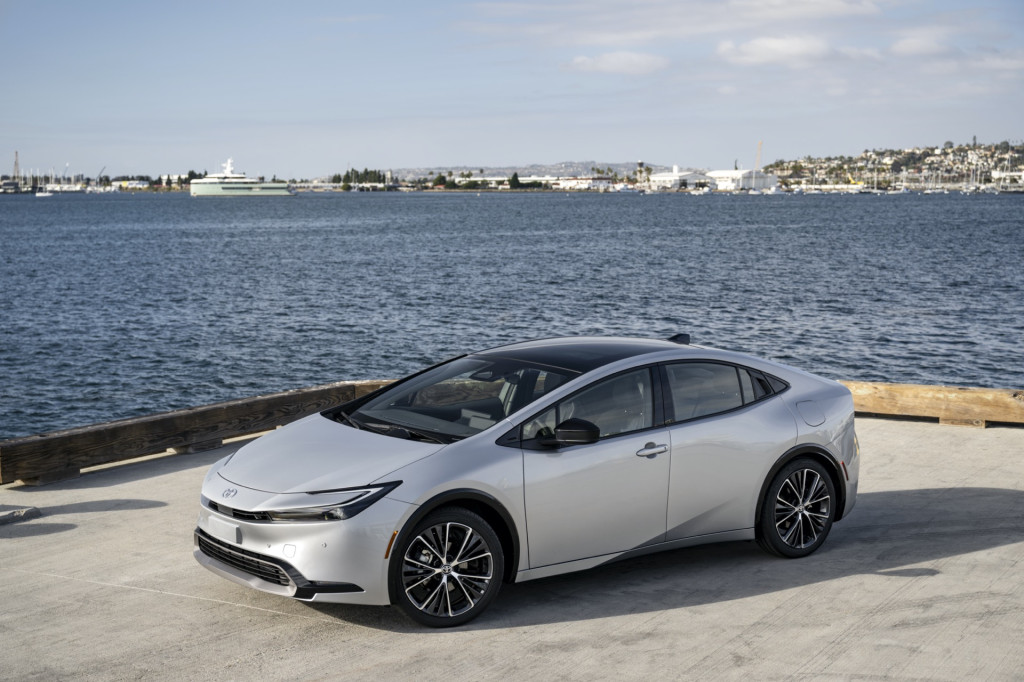
2023 Toyota Prius XLE
Toyota’s primary goal was to produce a wind-cheating shape that minimizes aerodynamic drag. A pure wedge shape is as close as designers can get to ideal, while still creating a vehicle that meets lighting, safety, and vehicle requirements. Many have tried, some with not-entirely-successful results; consider the Mercedes-Benz EQS sedan, for instance.
The 2023 Prius has a remarkably low nose, like the last generation, but now a hood that rises into a windshield almost at the same angle. The smooth arc continues over the roof, down the tailgate, and ends abruptly at a Kamm tail with simple, thin, horizontal lights sweeping from corner to corner. There’s no more split rear window, a Prius hallmark for three generations, and the rear door handle is hidden in the roof pillar trim (a la C-HR) with a button inside to release the electric latch before you pull the door open.
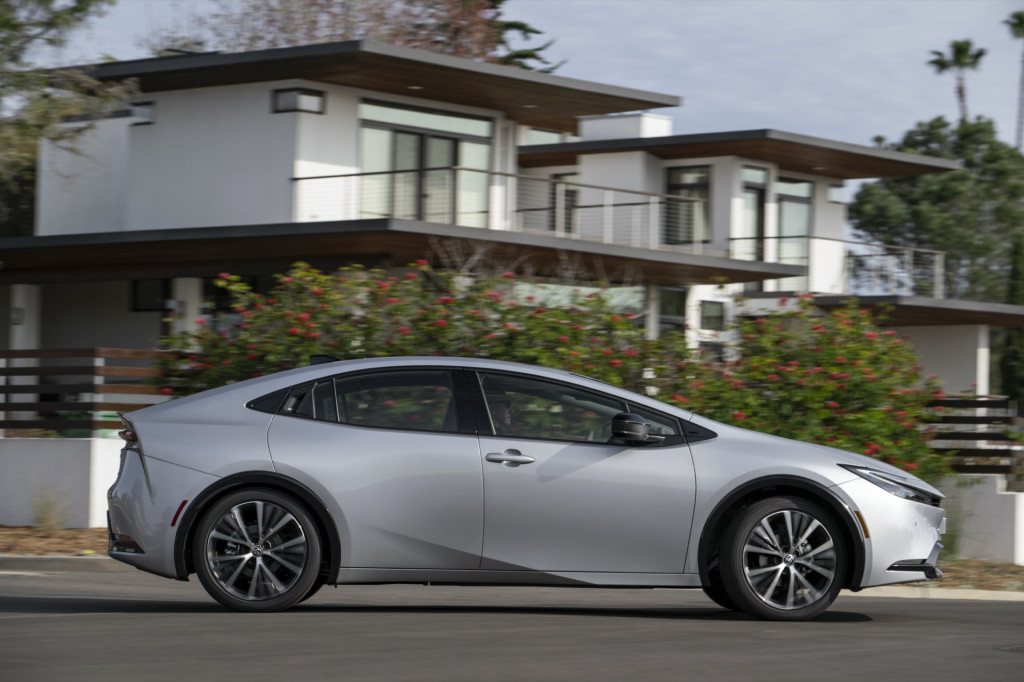
2023 Toyota Prius XLE
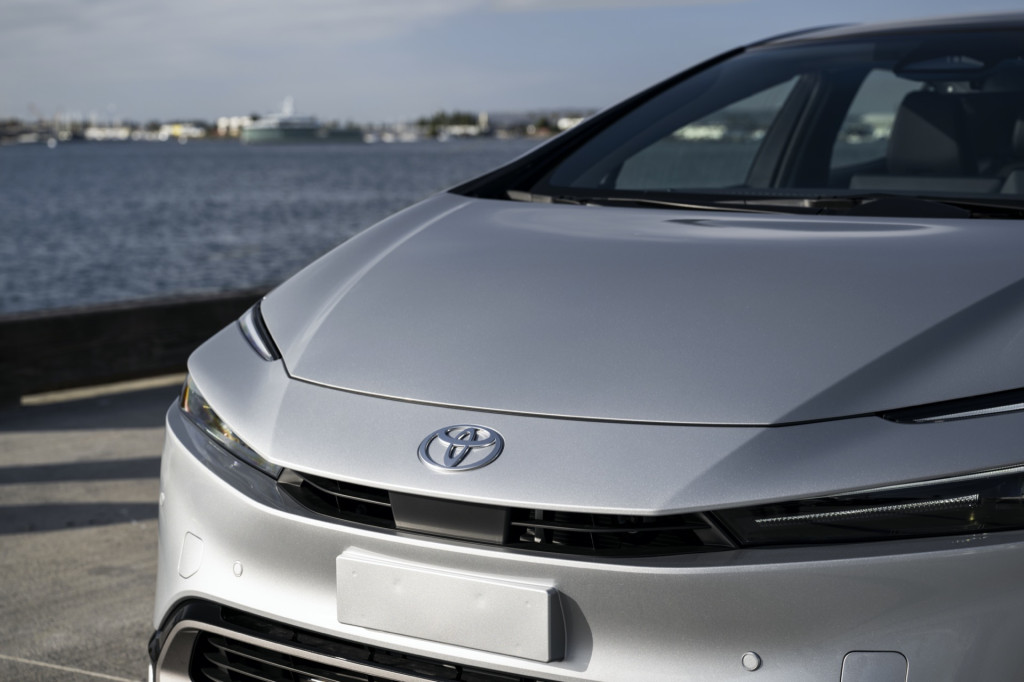
2023 Toyota Prius XLE

2023 Toyota Prius XLE
When we first saw it, the 2023 Prius brought to mind designs like Bertone’s 1970 Lancia Stratos HF Zero concept, the 1975 Princess from British Leyland, even the late, lamented Chevrolet Volt. We think it’s better looking than any of them, with a particularly well resolved rear end.
Inside, reality returns: it’s still a Prius, with a collection of light and dark grey and black vinyl, plastic, and cloth interior materials. There’s a round power button on all but the LE trim, and a conventional drive selector on the console. And in its fifth generation, the Prius has a conventional instrument cluster behind the steering wheel—though far forward at the base of the raked windshield. No more strips of mixed monochrome and color icons, numbers, and graphs!
A peppier and lighter Prius
On the road, the new Prius is undeniably peppier than any previous generation. Its 2.0-liter inline-4 engine is larger than last year’s Prius engine, and the two motor-generators have higher output ratings—although the lithium-ion battery stands at a lower capacity of 0.9 kwh. On-demand all-wheel drive is available as an option on all three trim levels; it adds more than 100 pounds to overall weight. Altogether, the combined powertrain is rated at 194 or 196 hp (for front- and all-wheel-drive versions respectively), fully 60 percent higher than the 121 hp of last year’s model.
Toyota quotes 0-to-60-mph acceleration times of 7.2 seconds for the base model and 7.0 seconds if the optional on-demand all-wheel drive is fitted. That’s two and a half seconds quicker than the previous generation’s 9.8 seconds. We drove mostly in Normal mode, and tested the quicker but noisier Sport mode and the remarkably inoffensive Eco mode. We might be tempted to leave it in Eco mode—which we’ve said about very few hybrids ever—and just drive it hard.
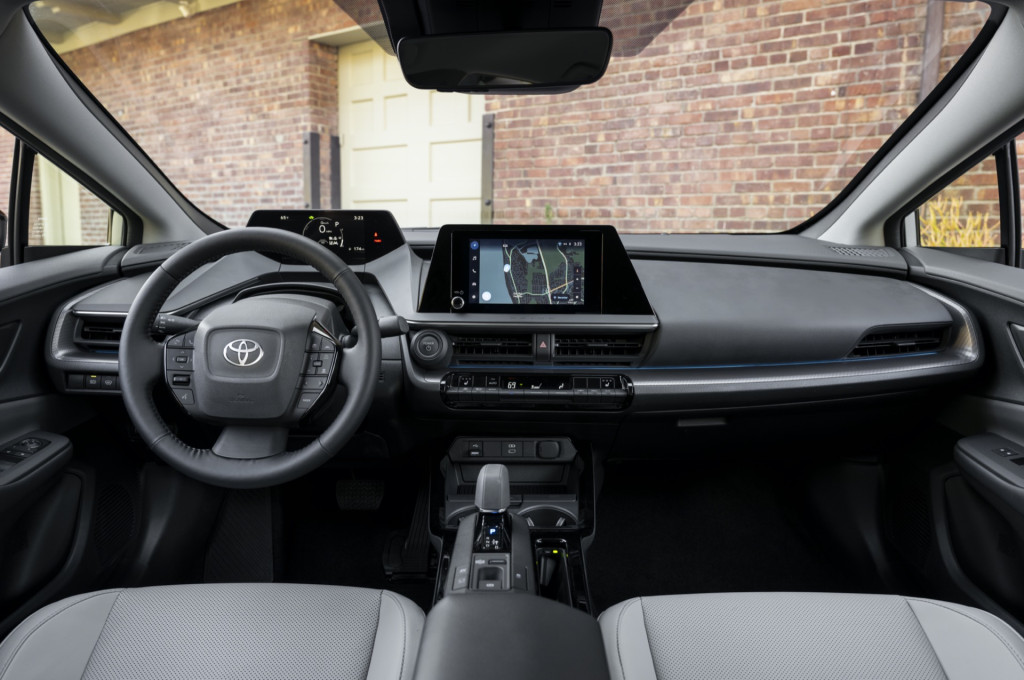
2023 Toyota Prius XLE
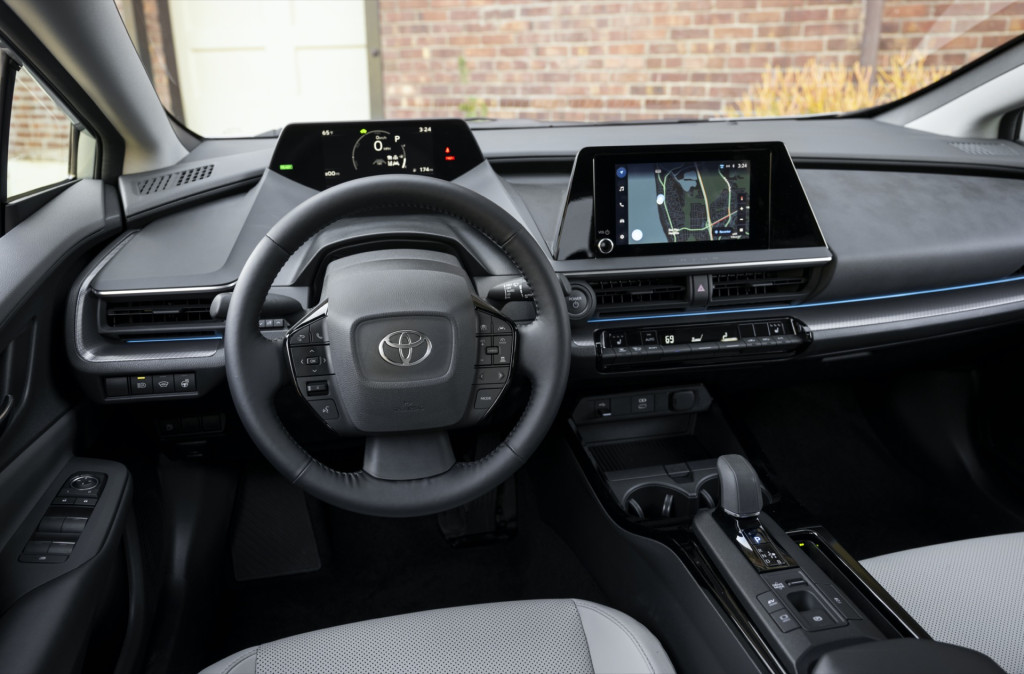
2023 Toyota Prius XLE
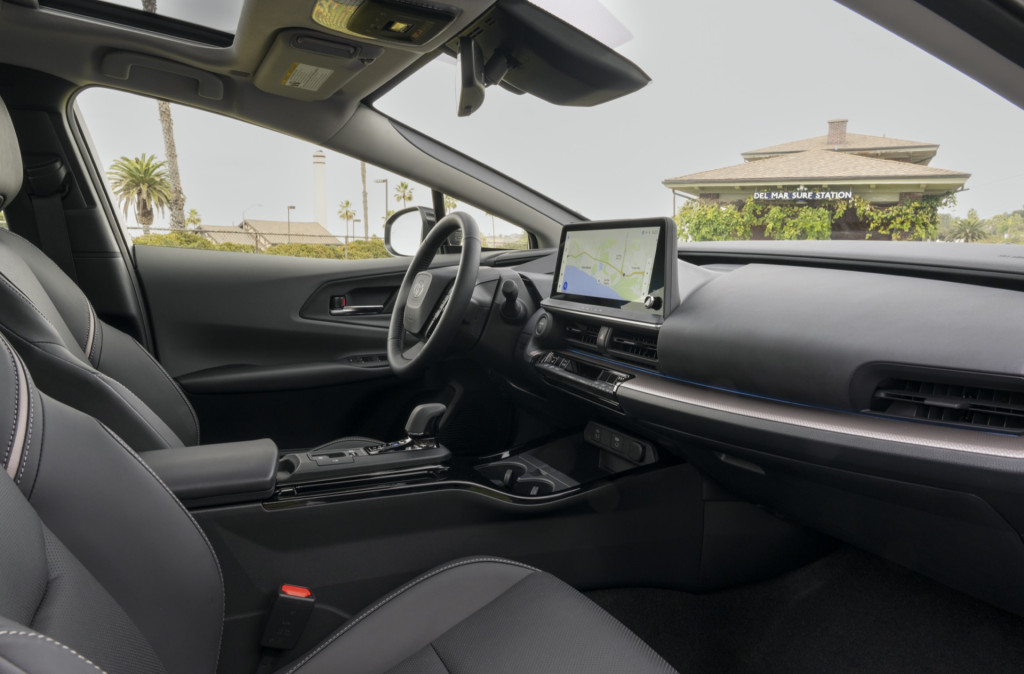
2023 Toyota Prius XLE
Unlike the last Prius, we discerned little difference in on-road behavior between FWD and AWD models. But we’ll wait for snowy weather to see if the extra traction is more evident.
While no Prius is likely to be as lithe and eager to engage with twisty mountain roads as, say, a Mazda 3, the low height of the new 2023 model makes it rewarding to toss through turns—to a certain degree. Most buyers may not do that; instead, they’ll experience a predictable, flat-turning car that’s easy to hustle through urban and suburban traffic, and does fine on highways as well.
Behind the wheel, the 2023 Prius controls will be familiar to owners of any recent Toyotas. The steering wheel has the usual buttons for voice control of phone calls and audio selection, cruise control, and toggling through the multi-information display on the cluster. The center touchscreen appears to be identical, or close, to other recent Toyota hybrids—meaning this is a Prius most drivers could get in and operate without guidance on the formerly quirky controls.
Tooling around the urban, suburban, and country roads of San Diego, with a few quick highway blasts, we were startled to find a dash meter showing “EV Driving Ratios” of 50 to 70 percent. We didn’t “hypermile” or pay much attention to the powertrain; we just drove the Prius as you would any passenger car. It’s clear the standard Prius, not even the plug-in model, can spend a lot more time in electric mode than it used to. That’s a good thing.
Comfortable seats, high quality expected
Despite its extreme windshield rake, getting in and out of the Prius front seats wasn’t that hard—not always the case in other cars with similarly laid-back screens. The front seats of the 2023 Prius are comfortable and supportive, though reporters north of 6 feet tall had to lower the driver’s seat as far as it could go to get adequate headroom. Rear-seat leg and shoulder room was adequate, but passengers sit closer to the floor than previously, which may not be ideal for some. The perforated “Softex” vinyl seat material of the XLE and Limited models looked suitably upscale; no cloth-trimmed LE base models were available to test.

2023 Toyota Prius XLE
Toyota has worked particularly hard on reducing noise, vibration, and harshness from the powertrain, the tires, and wind flowing over the body. For the first time in any Prius, we weren’t able to notice the engine switching on under most circumstances—a remarkable achievement in a car with a price starting slightly below $30,000. Under hard acceleration, sure, the engine noise rose to a muted roar and stayed there. But this was the most soothing by far of any generation of Prius we’ve tested.
With a descending window line in the front doors, front and side outward vision is excellent. The nose drops so steeply that even a 6-foot driver can’t see the front of the car—just the road directly ahead. At the rear, the lack of the former two-part tailgate glass wasn’t as much of a loss as we expected. There’s adequate, if not lavish, vision out the rear, though the three-quarters views are predictably obstructed by thick pillars and a rising window line. Still, it's not as bad as your average compact SUV.
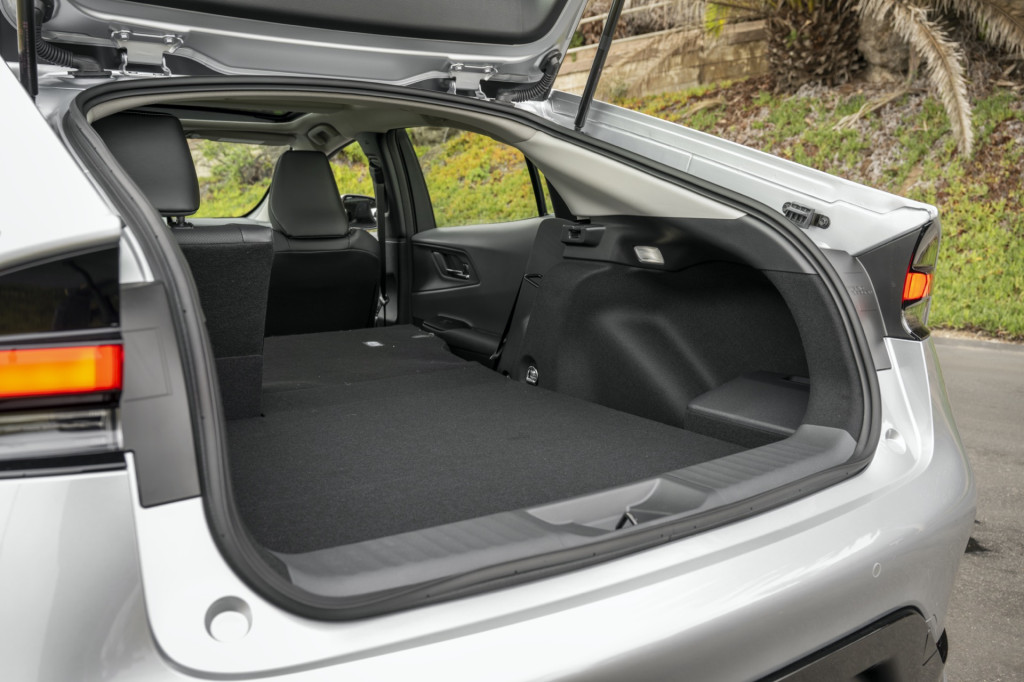
2023 Toyota Prius XLE
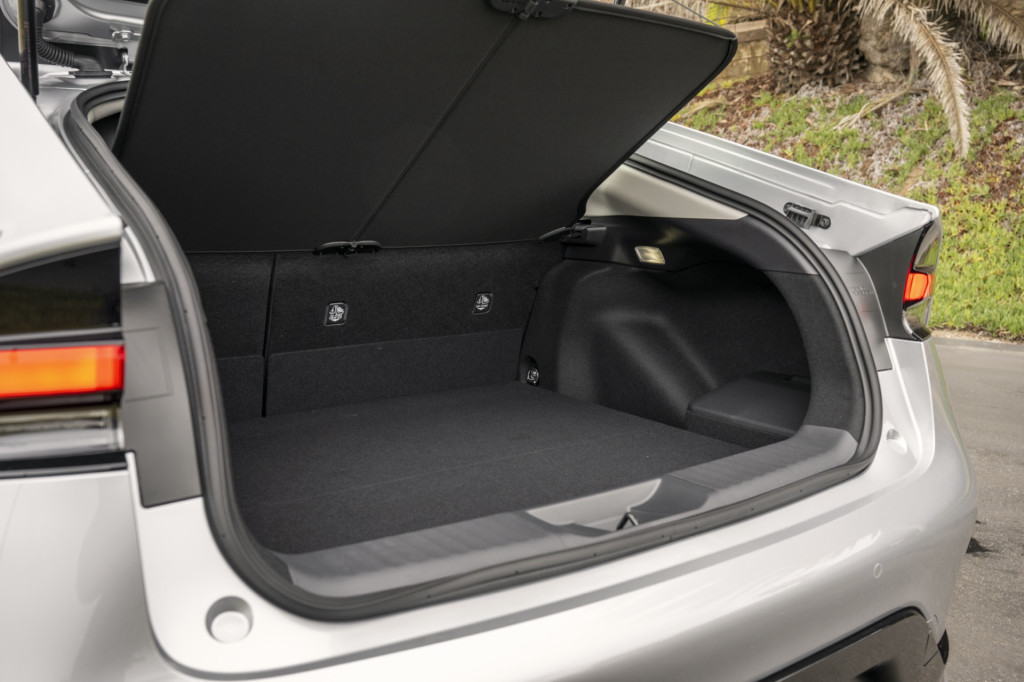
2023 Toyota Prius XLE
Cargo capacity is listed as 20.3 cubic feet with the rear seat up, but no figure was available for volume when it’s folded down. Our early-production vehicles, with VINs starting around 000100, were largely well put-together and defect-free. One had slightly more wind noise than another, but we have every confidence Toyota’s usual attention to quality will ensure the models rolling into dealers from the Japanese plant that supplies them all will have fixed that problem.
Bundle of active safety features
The 2023 Prius comes standard with the latest 3.0 version of what’s called Toyota Safety Sense, a bundle of advanced driver-assist systems that includes adaptive cruise control, automatic emergency braking with pedestrian detection, automatic high beams, road-sign detection, and active lane control. Blind-spot monitors with rear cross-traffic alerts are also standard.
Optional or standard features, depending on trim level, include front- and rear parking assist with automatic braking, a surround-view camera system, and an Advanced Park system that lets the car park itself in parallel or back in to its space. Neither the Insurance Institute for Highway Safety (IIHS) nor the National Highway Traffic Safety Administration (NHTSA) has yet rated the 2023 Prius for crash safety. Toyota says it expects high ratings from both.
Three trims, from 49 to 57 mpg combined
Both trim level and optional all-wheel drive factor into fuel-economy ratings for the 2023 Prius. They range from 49 to 57 mpg combined, for the Limited AWD and base LE front-wheel-drive models. With an 11.3-gallon fuel tank, careful drivers should get up to 500 miles of range from certain models under certain conditions. Regular (87 octane) gasoline is recommended.
The 2023 Toyota Prius comes in three trim levels: base LE, mid-grade XLE, and top Limited. All models have LED daytime running lights and tail lights, an active grille shutter, 60-40 split folding rear seat backs, power windows with automatic up/down, six USB-C charge ports (no earlier USB versions, though), a shark-fin roof antenna, and a cargo tonneau cover.
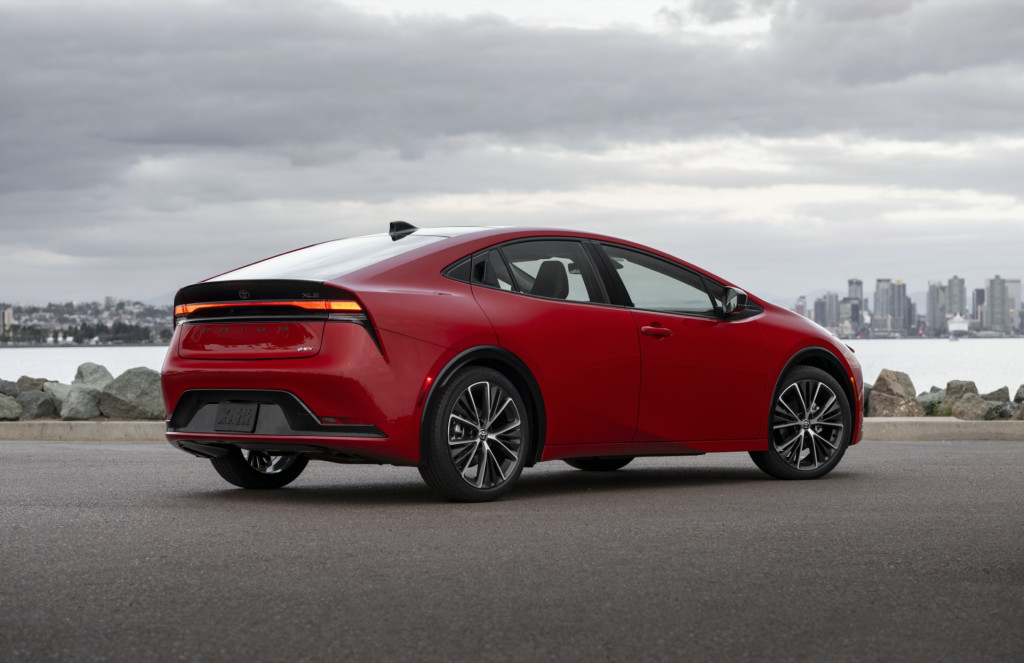
2023 Toyota Prius XLE
The LE has 17-inch steel wheels with plastic wheel covers, manually adjustable seats, and an 8-inch touchscreen display. XLE models step up to 19-inch alloy wheels plus rain-sensing wipers, power adjustable driver’s seats, heated front seats, proximity keys, and keyless start.
The top Limited trim adds a power rear liftgate, heated and cooled front seats with memory settings, a standard glass roof and a 12.3-inch central touchscreen (both optional on the XLE). Prices start at $28,545 (including the mandatory delivery fee of $1,095) for the base LE model with front-wheel drive, and step up to $36,960 for a Limited AWD version. Options like a rear camera mirror can push the top sticker price toward $40,000.
Toyota provided airfare, lodging, and meals to enable Green Car Reports to bring you this test drive review.
